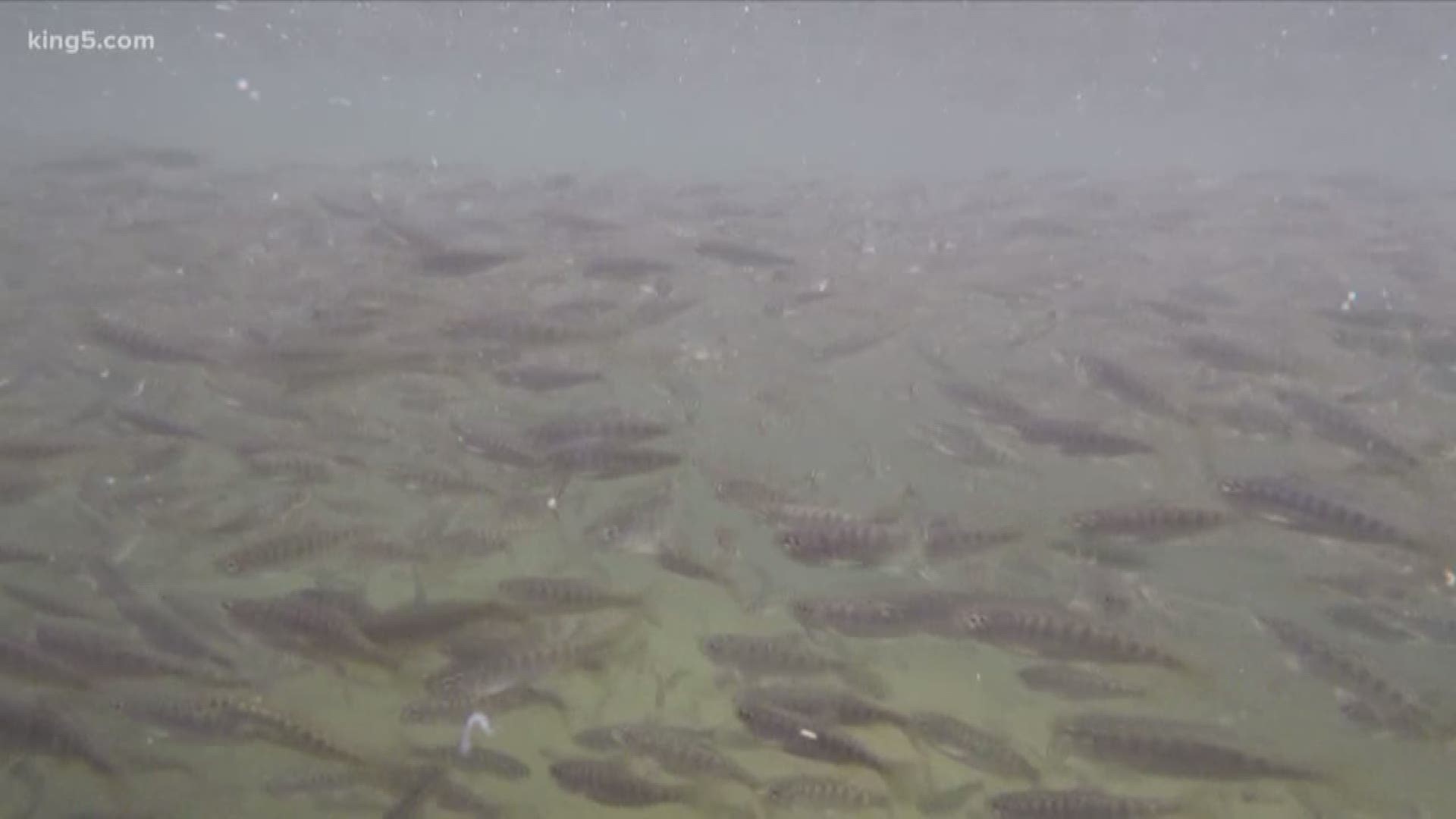SEATTLE — As killer whales struggle to find enough food, new research could help explain why their primary food source is diminishing.
A new study from the University of Washington and the National Oceanic and Atmospheric Administration (NOAA) says that a rise of resident orcas and their insatiable appetite for large Chinook salmon is the main driver behind the decline of the fish.
Killer whales prefer to eat only the biggest, juiciest Chinook salmon that they can find. The larger the fish, the more energy a whale can get for its meal, according to UW researchers.
UW researchers and NOAA have been studying the size of Chinook salmon over 40 years and found that their sizes have decreased by about 10% in length and up to 30% in overall weight.
It used to be common to find Chinook salmon that were 40 inches or more in length, particularly in the Columbia River or Alaska’s Kenai Peninsula.
“We have two protected species, resident killer whales and Chinook salmon, and we are trying to increase abundances of both — yet they are interacting as predator and prey,” said the study's lead author, Jan Ohlberger, a research scientist at the UW School of Aquatic and Fishery Sciences. “Killer whales don’t show a lot of interest in Chinook until they reach a certain size, and then they focus intensely on those individuals.
Resident orcas usually don’t go for Chinook until they reach about 25 inches in length, and they really prefer fish that are over 30 inches long, researchers said.
The picky Southern Resident orcas are not only at a disadvantage because of salmon size, but also due to other marine competition.
These salmon will migrate thousands of miles north to the Gulf of Alaska where they feed and fatten up before returning to the Pacific Northwest to leave their eggs.
When they head back down toward Washington waters, they pass through feeding grounds for several different killer whale populations, which also seem to have an affinity for big Chinook.
It's possible that Northern resident whales along the British Columbia coast (with numbers over 300) and the Alaska orcas (with numbers close to 2,300 whales) are taking meals from the southern resident orcas-- a population struggling with 73 whales.
“We like to think of the Pacific Ocean as a really big place, but that’s because we are really lousy swimmers. For killer whales and salmon, it’s not a big place,” said the study's co-author Daniel Schindler, a UW professor of aquatic and fishery sciences.
While different orca populations avoid each other in the ocean, they inherently overlap their whole lives when competing for the same prey, he explained.

